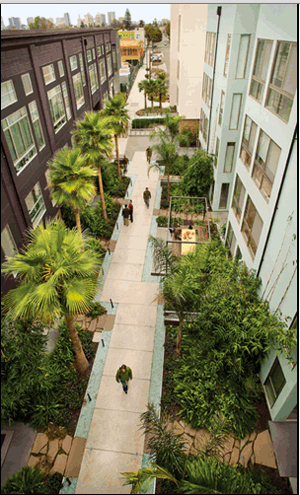Work history
A Landscape Design Helps Revive the Industrial Past of West Oakland
LANDSCAPE ARCHITECTURE MAGAZINE
by By Joanne Furio
March 1, 2011
During World War II, West Oakland, California, was home to a thriving industrial center, where railroads brought in the passengers and produce that would become its backbone.
At the Central Station, African Americans from the South arrived to work at nearby shipyards. In addition to being an architectural gem, the 1912 Beaux-Arts station has historic significance, being the birthplace of the Brotherhood of Sleeping Car Porters, one of the first African American labor unions.
A few blocks to the south, the Pacific Canning Company, founded by Lew Hing, one of the nation’s first Chinese American industrialists, turned vegetables from the Central Valley into canned commodities that were shipped across America. At the time, the cannery was California’s third largest.
The decline of the railroad, rise of the car, and failed urban renewal projects were some of the events that conspired to turn the neighborhood into a “brownfield” of abandoned buildings and warehouses. The cannery closed in the 1960s, and remained empty for decades. The station had its doors closed after the Loma Prieta earthquake of 1989 rendered it unsafe.


